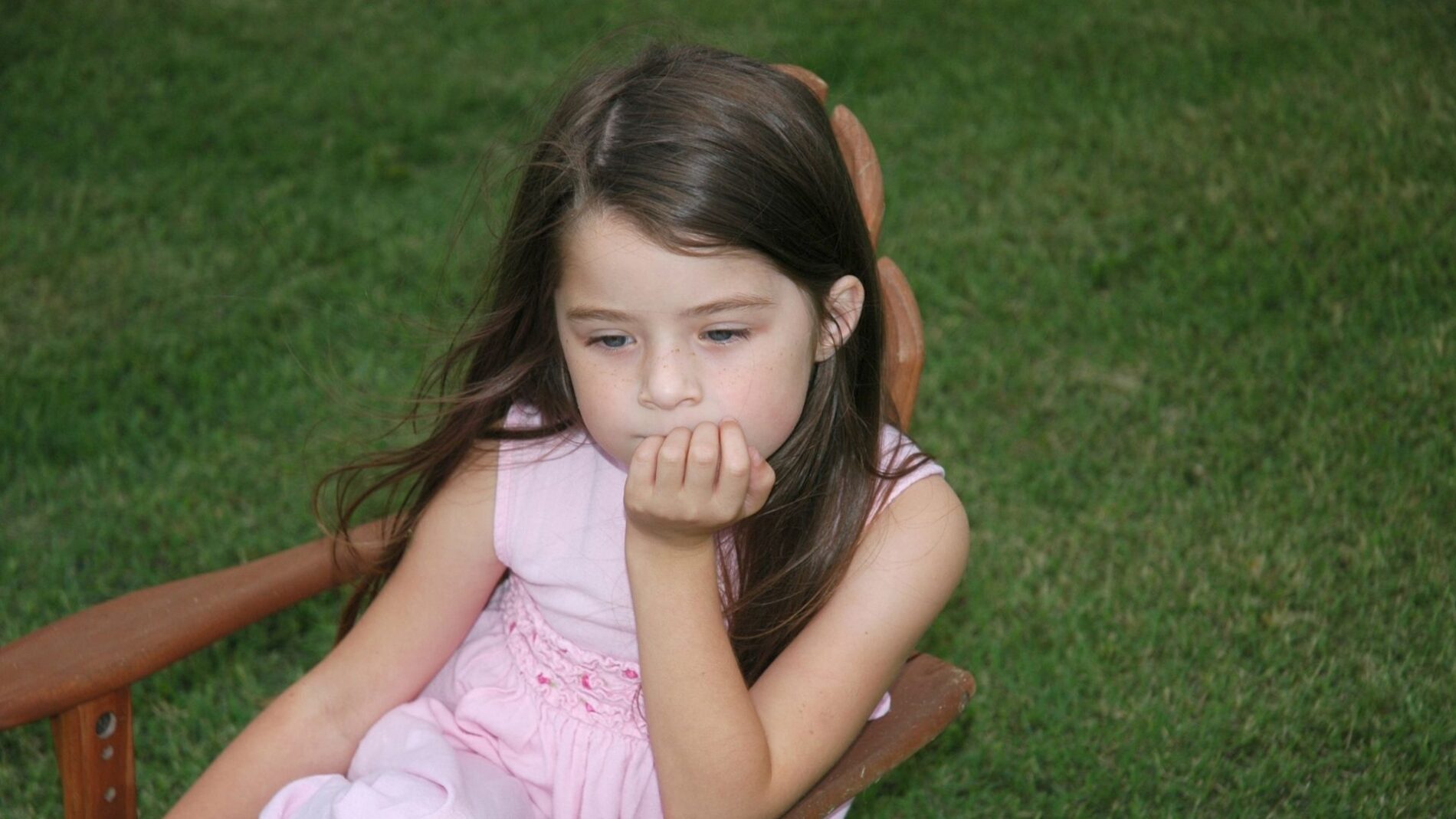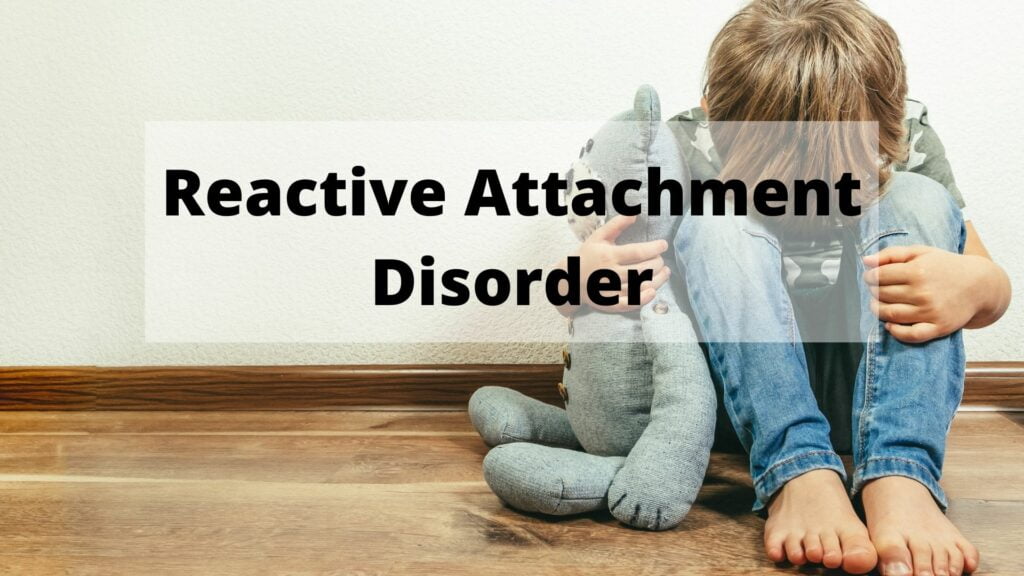An estimate of 40% of children in foster care has reactive attachment disorder. That number is staggering. Though it’s a good idea to understand reactive attachment disorder before you adopt from your local adoption agency. In this blog post, we’ll go into reactive attachment disorder symptoms, reactive attachment disorder treatment options, and prevention.
Contents
What Is Reactive Attachment Disorder?
Reactive attachment disorder is a relatively new diagnosis in the DSM-IV. It has been in as a category of Disinhibited Social Engagement Disorder. This itself was only in recognition in the most recent edition of the manual and not by earlier classifications.
It causes many problems for people who suffer from it. They often have trouble maintaining relationships with others. Others struggle to trust or feel affection toward their friends and family members. They can be overly aggressive or completely withdrawn when they do manage to form attachments with certain individuals.
It is estimated to affect less than two percent of children across cultures worldwide. However, this number may vary depending on how it is defined and how it is measured.
Symptoms

Reactive attachment disorder usually develops in infancy. During early childhood, there is little study on the causes and symptoms of reactive attachment disorder. It’s unclear whether it affects children older than five years.
Some signs and symptoms may include –
- withdrawal, fear, sadness, or impatience for no apparent reason.
- lack of interest in or pleasure from activities enjoyed before.
- failure to develop age-appropriate relationships with caregivers and peers.
- unusual lack of concern about physical appearance (such as cleanliness).
- ignoring painful stimuli; seeming not to notice if someone is rude or aggressive towards them.
- responding inappropriately and coldly when frightened.
- inability to form emotional attachments (attachments) with others – for example, a person who seems very lonely even when surrounded by people.
- They do not show warmth or empathy toward adults they know well nor seek comfort from them when hurt or upset.
This can be either because they do not recognize adults as sources of comfort. Another reason could be that their concepts of how relationships work exclude the possibility of depending on someone else for support.
Causes Of Reactive Attachment Disorder
People who suffer from reactive attachment disorder often withdraw emotionally and isolate socially. This makes it difficult for them to form relationships with friends, family members, teachers, etc.
As the name suggests reactive attachment disorder is considered an issue of “attachment”. The primary caregiver (usually the mother) forms an emotional connection with her baby during infancy by holding and comforting him/her when he cries.
This helps develop normal social interactions as well as self-regulation skills such as controlling emotions and behaviors after these experiences. When this important process does not take place properly. Infants may grow up without developing healthy ways to regulate their feelings and behavior.
It’s still unclear why some babies and kids have this condition while others don’t. There are several ideas about reactive attachment disorder and its origins. More study is needed to improve diagnostic and treatment choices.
Reactive Attachment Disorder can have both environmental and biological causes which stem from the history of the individual before birth up until their early childhood experiences after being born. Some examples of stressors that may trigger this condition are abrupt separation from parents/caregivers during childhood or being neglected.
Risk Factors

Reactive attachment disorder is the inability to develop emotional attachments with others normally.
It can be caused by many different factors. Such as-
- an unstable or neglectful environment.
- a lack of early care and stimulation.
- abuse, or trauma both in childhood and adulthood.
- Reactive attachment disorder is usually diagnosed between ages one and five years old but it can also occur later on in life after undergoing significant traumatic experiences.
Complications of Reactive Attachment Disorder
Reactive attachment disorder can last for years without therapy and can have long-term consequences.
Children with RAD are more likely to develop issues later in childhood and adolescence. As a result of physical, emotional, and social neglect and abuse. The following are areas of possible complications:
- Developmental milestones are not met on time.
- Delays in physical development (which can be due to eating difficulties).
- Depression, anxiety, and anger control disorders are examples of emotional concerns.
- Anorexia nervosa
- Abuse and dependence on drugs and alcohol.
- Learning and/or behavioral issues at school.
- Relationship issues (with peers or adults, and potentially later with partners).
Diagnosis

It is usually made by a mental health professional such as a psychologist, psychiatrist, or clinical social worker. The criteria for reactive attachment disorder is based on the Diagnostic and Statistical Manual of Mental Disorders (DSM) published by the American Psychiatric Association. For an accurate diagnosis, your child’s personal history, especially any history of neglect or abuse, is crucial.
To be in proper diagnosis with RAD, children must be between the ages of 9 months and 5 years (or have acquired the precise behavioral patterns linked with this condition within this period). However, it is not uncommon for the diagnosis to be in a child who is a little older and has never been in diagnosis.
Treatment of Reactive Attachment Disorder
The first step in the treatment process for this disorder is diagnosis and evaluation that can be through:
- talking with parents about their child’s behavior and development;
- medical examinations to rule out any physical illness;
- diagnostic tests like a blood test or imaging studies;
- referral to other professionals who may give additional assessments such as speech therapist, occupational therapist, or others depending upon what problems during the assessment phase.
The next stage is treatment would involve psychoeducation sessions. This is a process of teaching parents new skills and strategies that can improve their child’s symptoms.
The next step in the treatment for reactive attachment disorder is family therapy. Family therapy is when you help parents to be more kind and sensitive to their children. It will also help the relationship between the parents and their children.
Cognitive-behavioral therapy is a newer type of therapy. It happens with a mental health professional. They teach you how to relax, and they can show you how to think about things in a different way too.
All these are aimed at improving problems such as anger control or poor social interactions among other impairments associated with this disorder.
Prevention

A good way to manage this condition would be through early intervention treatments like parent management training programs to prevent it from developing.
People should notice significant changes in a child’s behavior. These red flags include:
- failing to develop healthy relationships with parents, caregivers, or other adults.
- losing skills they once had such as language development or social abilities.
- difficulty adjusting to new situations including school transitions or moving homes.
If you observe these behaviors, you must speak with your pediatrician right away.
Conclusion
Reactive attachment disorder is a mental health condition where the person has difficulty forming relationships with others. This can be by neglectful or abusive caregiving in early childhood. This leads to emotional instability and impulsiveness later on in life. If you think that someone close to you might have this disorder.
It’s important not only for them but also for their loved ones to get help as soon as possible. This article will help you decide what to do in the future when talking about this topic.
This article will give you information about how to talk to people who have a severe anxiety disorder. It should help if you do happen to speak with someone who has this disorder.
For more information, please contact MantraCare. Parenting is a challenging yet rewarding experience that is crucial for the development and well-being of a child. If you have any queries regarding Online Parenting Counseling experienced therapists at MantraCare can help: Book a trial therapy session


